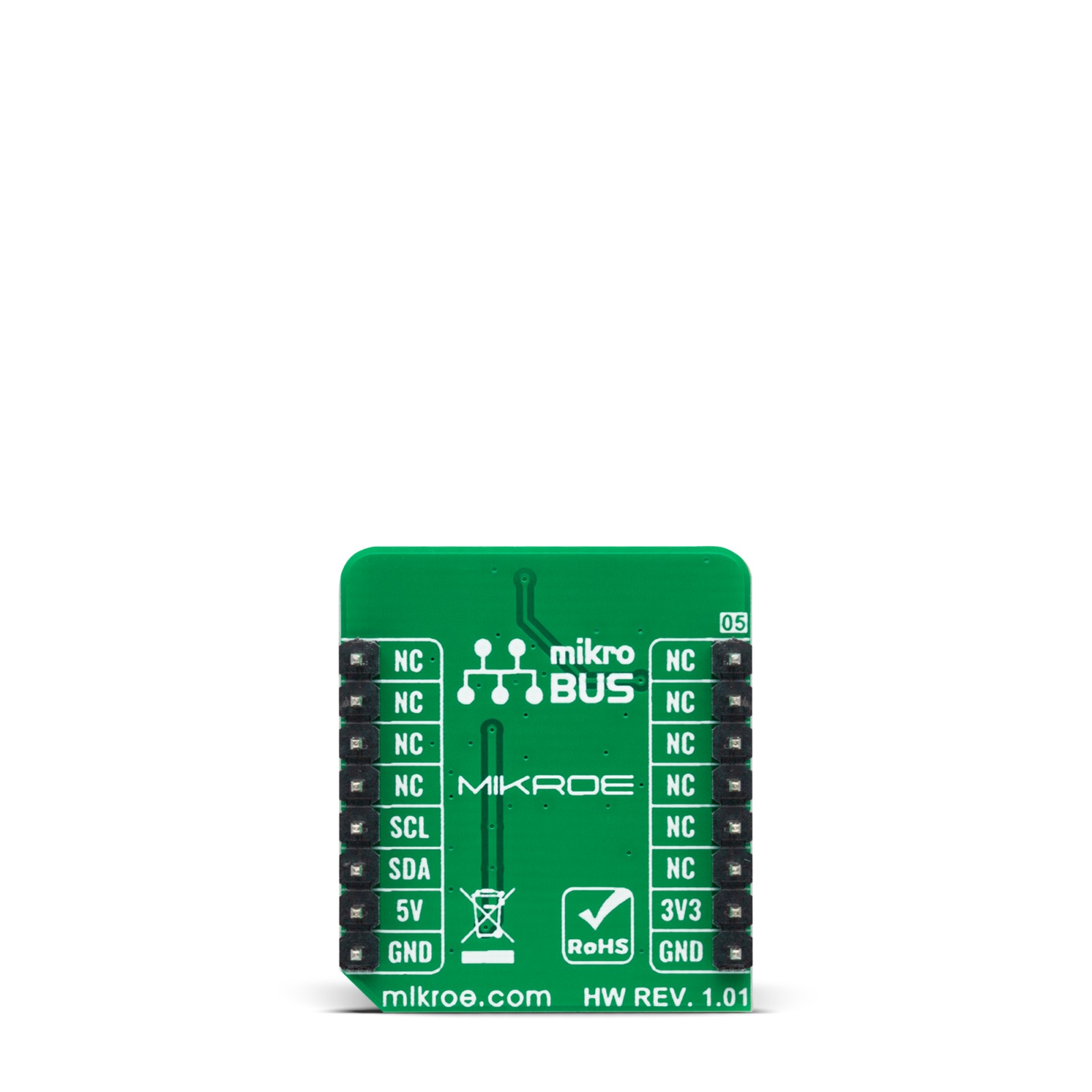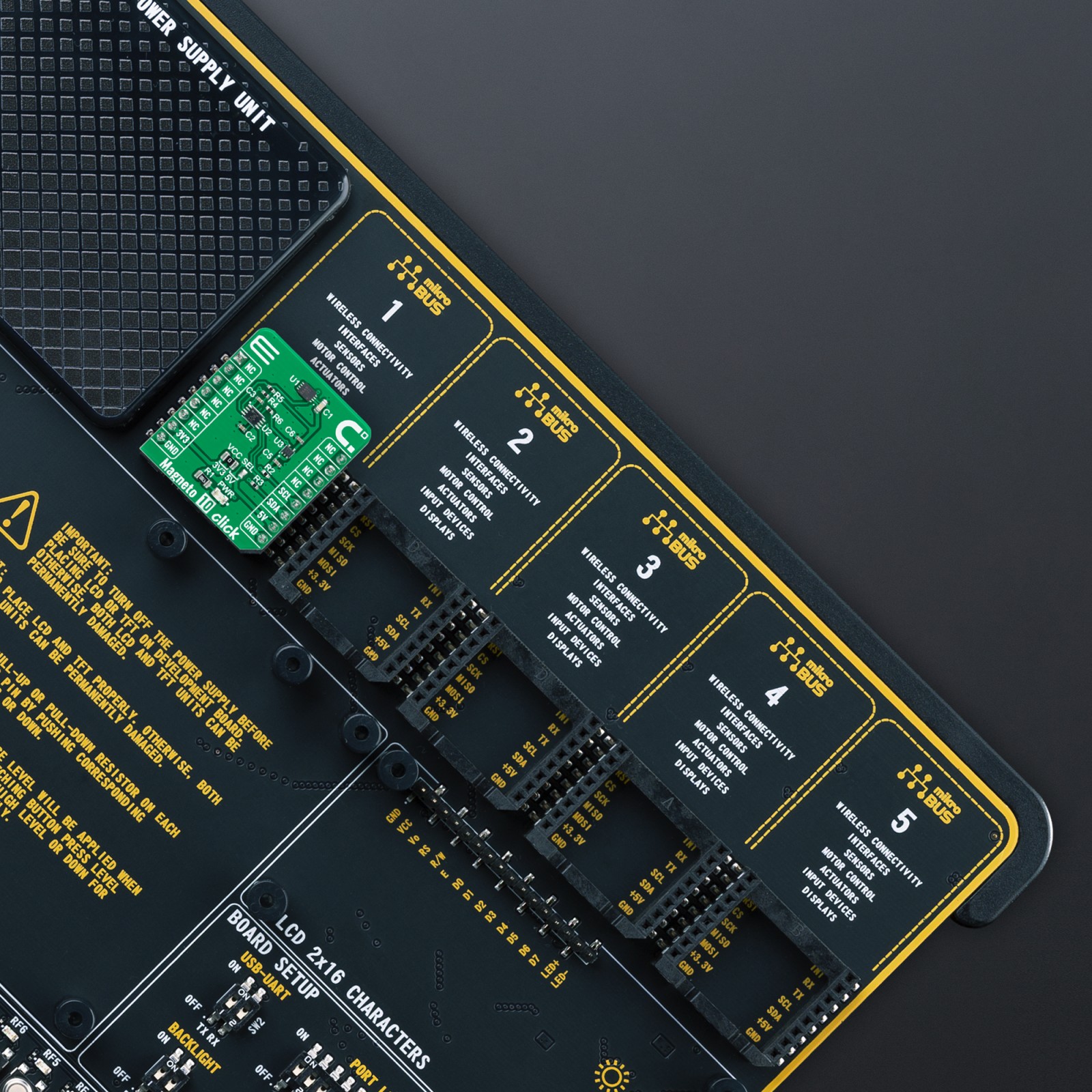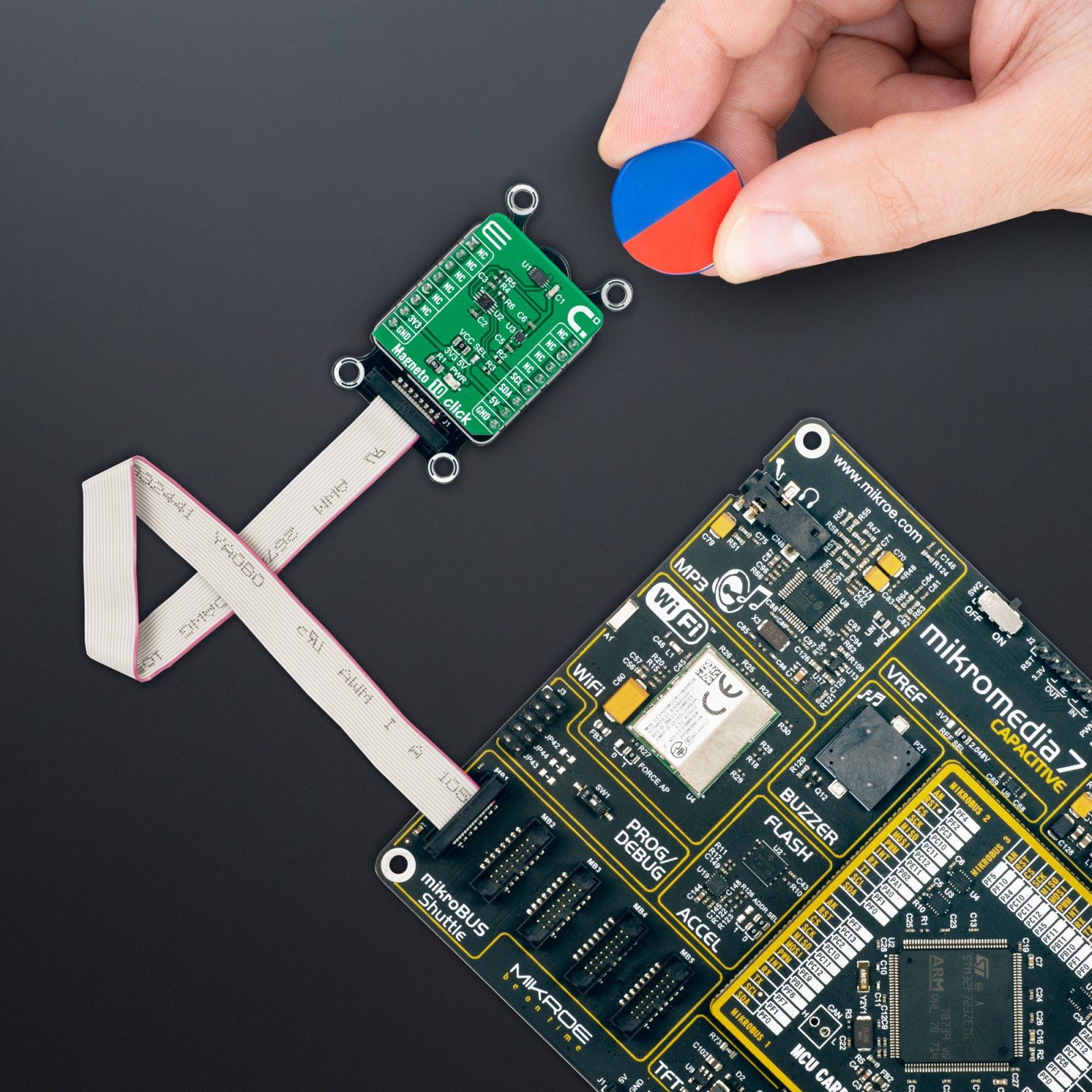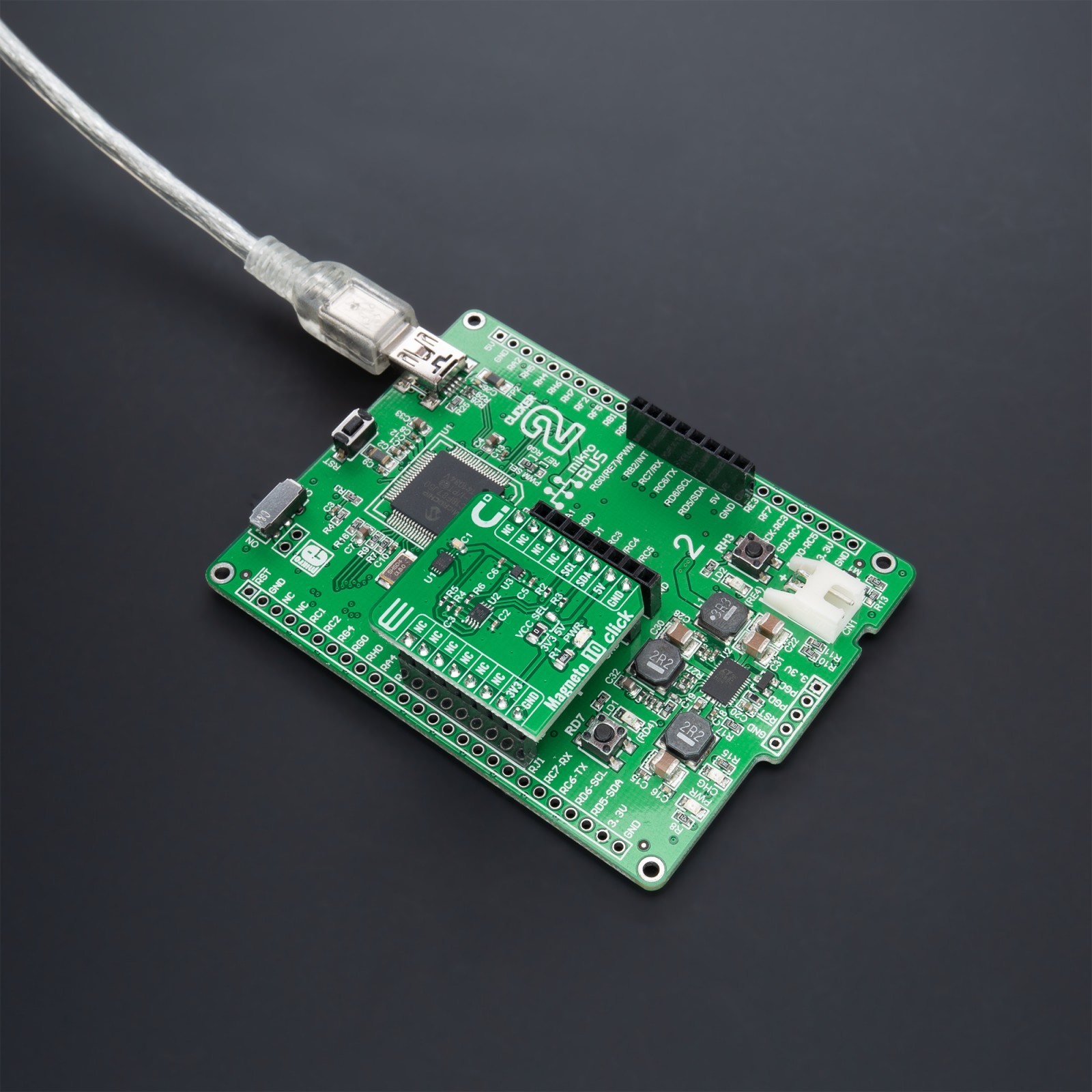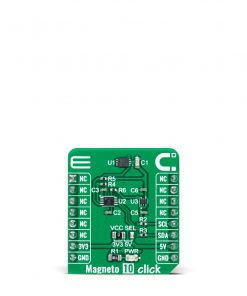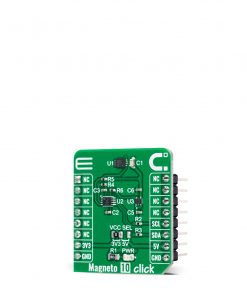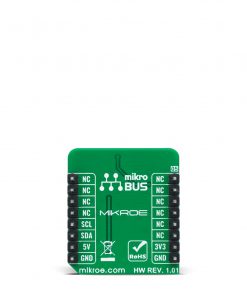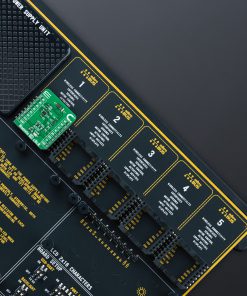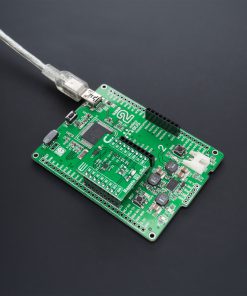Magneto 10 Click
R330.00 ex. VAT
Magneto 10 Click is a compact add-on board that contains a 3D magnetometer. This board features the MLX90392, a +/-5mT range magnetometer for low-noise applications from Melexis Technologies. The MLX90392, specially designed for micropower applications, measures magnetic fields along the three axes (X, Y being in a plane parallel to the surface of the die, and Z being perpendicular to the surface). Those measurements and the MLX90392’s temperature are converted into 16-bit words, transferred upon request over I2C communication. This Click board™ is suitable for position sensing requiring a small magnetic range and precise position measurement where noise is a critical design parameter.
Magneto 10 Click is supported by a mikroSDK compliant library, which includes functions that simplify software development. This Click board™ comes as a fully tested product, ready to be used on a system equipped with the mikroBUS™ socket.
Stock: Lead-time applicable.
| 5+ | R313.50 |
| 10+ | R297.00 |
| 15+ | R280.50 |
| 20+ | R269.94 |



